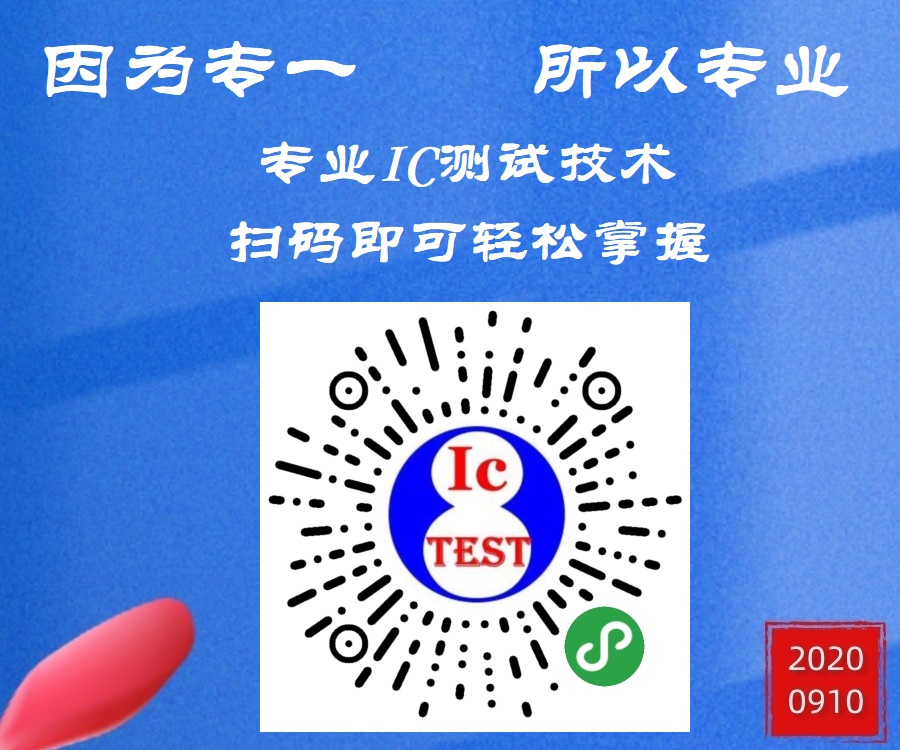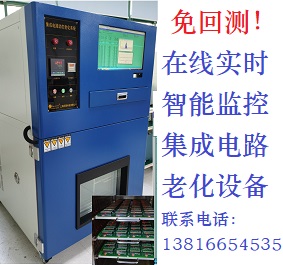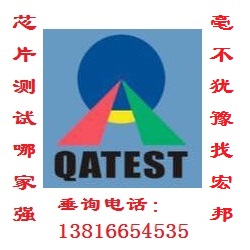|
TRI's TR6800 IC tester is specially designed for testing Power Management ICs. It is ideal for testing regulators, detectors, resets, switches, HCS and TMU modules for DC parameter measurement, AC32 and AC64 modules for functional pattern testing, AWG and Digitizers for Analog Testing.
The TR6800 features graphical and text mode program development environments, and rich debugging and analytic tools. It works on top of the Windows 2000 Operating System with a user-friendly GUI. The TR6800 seamlessly connects to all popular probers and handlers, and supports multi-site testing capabilities. All these features make TR6800 the best Power Management IC tester for both engineering verification and mass production.
Complete DC parameter, functional pattern, and analog testing capability.
User-configurable modular architecture allows flexible configuration to meet a wide variety of testing requirements.
Programmable voltage and current range for greater accuracy (DVC, PVC, OVC,HCS, HVS).
Pulse Width, Pulse Period, Frequency, Propagation Delay, Rising/Falling Time testing with up to 800MHz speed (TMU).
128 channels of user-configurable switching relay (Matrix Board).
32 or 64 channels of logic functional pattern testing at up to 20MHz speed, up to 12 channels.
Can integrate NI AWG and Digitizer instrument for analog testing.
Superb test program debugging tools.
Shmoo Plot feature for engineering analysis.
Complete testing statistic reports and histogram.
Enhanced production efficiency with multi-site testing capability.
Text Mode & GUI (Graphical User Interface) test program development environments and rich debugging & analytic tools.
IC Tester TR-6800 User Manual
1. Introduction and Overview 12
1.1. Introduction 12
1.2. Hardware Description 14
1.2.1 Basic Configuration 14
1.2.2 System Block Diagram 15
1.2.3 Production Configuration 16
1.2.4 Introduction to System Boards 18
1.2.5 PCI Interface Board 19
1.2.6 TTL Signals Interaction Diagram 22
1.2.7 PHI Connector Pin Assignment 23
1.2.8 PVC Board 23
1.2.9 OVC Board 24
1.2.10 DVC Board 25
1.2.11 AC32/AC64 Board 26
1.2.12 Time measurement and Relay control Board(TMU) 27
1.2.13 Relay Matrix Board 28
1.3. Software Description 28
1.3.1 User Management 28
1.3.2 Test Sequence Editor 31
1.3.3 PHI Editor 31
1.3.4 Site Control 33
1.3.5 Summary Report 34
1.3.6 Text Mode Editor 35
1.3.7 Pattern Editor 36
1.3.8 Pattern Compiler 42
1.3.9 Diagnosis 43
1.3.10 AC32/AC64 Memory SelfTest 44
1.3.11 Auto Calibration 44
2. A tour of the environment 46
2.1. Starting TR-6800 software 46
2.2. Using toolbars, menus 48
2.3. Placing objects on the test flow window 50
2.4. Changing the test flow window’s layout and object name 51
2.5. Opening/closing an existed form 53
2.6. Debugging test programs 53
2.7. Operator mode(mass production) 54
3. Create a Test Program 61
3.1. Create a New Project 61
3.2. A Glance at Project Manager 63
3.3. Site_Define 64
3.4. Pin_Define 64
3.5. Level Set Definition 65
3.6. User_Relay 69
3.7. Load Pattern Object 70
3.8. Test_Program 73
3.9. Bin Definition 75
4. The Standard Objects 77
4.1. PVC Object 78
4.1.1 Introduction 78
4.1.2 FVMI Mode Diagram: 80
4.1.3 FIMV Mode Diagram: 80
4.1.4 DC Test Concepts 81
4.1.5 Programming the PVC object 81
4.2. DVC Object 95
4.2.1 Introduction 95
4.2.2 DC Test Concepts 96
4.2.3 Programming the DVC object 97
4.3. HCS Object 110
4.3.1 Introduction 110
4.3.2 FVMI Mode Diagram 111
4.3.3 FIMV Mode Diagram 112
4.3.4 DC Test Concepts 113
4.3.5 Programming the HCS object 113
4.4. OVC Object 119
4.4.1 Introduction 119
4.4.2 FVMI Mode Diagram 120
4.4.3 FIMV Mode Diagram 120
4.4.4 DC Test Concepts 122
4.4.5 Programming the OVC object 122
4.5. PMU Object 127
4.5.1 Introduction 127
4.5.2 DC Test Concepts 128
4.5.3 Programming the PMU object 128
4.6. UR Object 144
4.7. Matrix Control Object 147
4.8. Time Measurement Unit Object 149
4.8.1 Summary of Time Measurement object: 150
4.8.2 Programming of Time Measurement Object 151
4.9. Test Pattern Object 156
4.10. Apply Level Set Object 158
4.11. Pin Mode Object 159
4.12. Load Pattern Object 162
4.13. Pin Relay Object 164
4.14. Level Set Definition Tool 165
4.15. Timing Set Object 171
4.16. Pass Node / Fail Node Object 173
4.17. Memo Object 173
4.18. Delay Object 174
4.19. Operator Object 174
4.20. Loop Object 176
4.21. Text Mode Object 178
5. Using Debug Tools 181
5.1. System Information 181
5.2. Pin Definition Tool 183
5.3. OVC Calibration Tool 185
5.4. HCS calibration Tool 186
5.5. Diagnosis Tool 188
5.6. Production Tool 188
5.7. Site Control Tool 204
5.8. Create Bins Definition 209
5.9. Data Log Window 211
6. Specifications 217
6.1. OVC V/I Resource Specification: 217
6.2. PVC V/I Resource Specification : 218
6.3. Time measurement unit and relay control specification 220
6.4. AC 32 Pattern Specification 221
6.5. DVC V/I Resource Specification 222
6.6. Matrix Specifications 223
6.7. Environment Requirements Specification: 223
7. Appandix A—Text Mode APIs 224
7.1. void AC_CYCLE_OFF(void) 224
7.2. void AC_CYCLE_ON(int start, int stop) 224:
|






